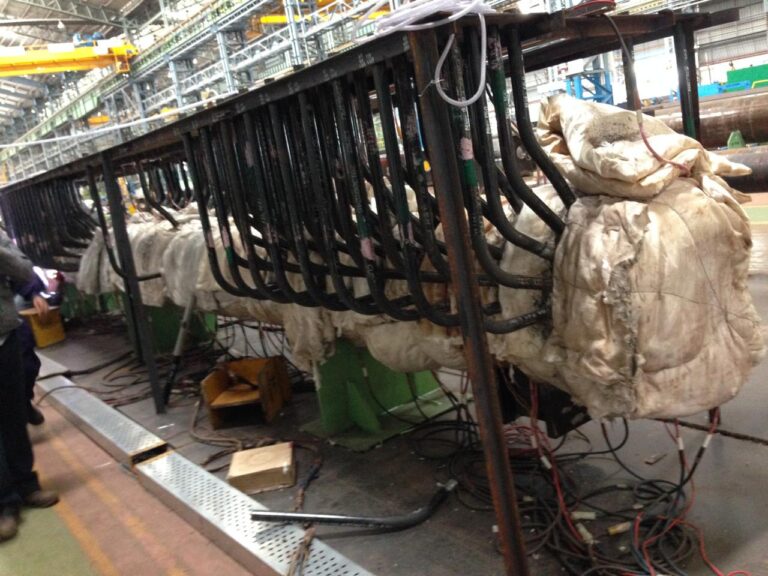
Localised Stress Relieving is a Post Weld Heat Treatment (PWHT) method focused on relieving residual stresses in a specific area of a welded component, rather than treating the entire part. This technique is often used when full furnace treatment is impractical due to size, location, or cost constraints—particularly in field or site conditions.
It is commonly applied in the oil & gas, power generation, and pressure vessel industries to ensure compliance with codes like ASME Section VIII, B31.1, and B31.3, which often require stress relief after welding certain materials and thicknesses.
Purpose of Localised Stress Relieving
- Relieve residual stresses from the weld zone
- Improve toughness and mechanical performance in the heat-affected zone (HAZ)
- Reduce the risk of stress corrosion cracking or brittle fracture
- Ensure code compliance for pressure-containing or critical components
Methodology
- Equipment Used
- Electric resistance heating pads or ceramic heaters
- Thermocouples for precise temperature monitoring
- Insulation blankets to retain heat and prevent rapid cooling
- Temperature controllers and recorders
- Heating Zone Setup
- The heat is applied around the weld area, typically extending 2 to 3 times the material thickness or at least 75 mm on either side of the weld.
- The setup must ensure even temperature distribution to prevent thermal gradients and localized distortion.
- Typical Heat Treatment Cycle
- Heating Rate: Controlled, usually not exceeding 100–200 °C/hr
- Soak Temperature: Typically 600–750 °C depending on material type (e.g., 620 °C for carbon steel)
- Hold Time: 1 hour per 25 mm of thickness (minimum 30 minutes often used)
- Cooling: Controlled cool down in still air or under insulation to avoid thermal shock
Advantages
- Ideal for in-service or field repairs
- Minimizes downtime and avoids full furnace use
- Cost-effective for large or stationary equipment
- Localized control reduces risk of warping or affecting adjacent components
Limitations
- Requires strict control and skilled personnel
- Only effective when heat distribution is even and well-insulated
- Documentation and temperature recording are essential for quality assurance
- Not suitable for materials that require uniform stress relief throughout the entire component
Applications
- Welds in pressure vessels, piping, or structural components
- Field weld repairs on in-service equipment
- Localized fabrication welds in heavy industry and offshore structures
Compliance and Standards
- Must comply with relevant codes (e.g., ASME, AWS, API)
- Thermocouple placement and recorded heat cycles should be reviewed and documented
- Often witnessed or verified by third-party inspectors
